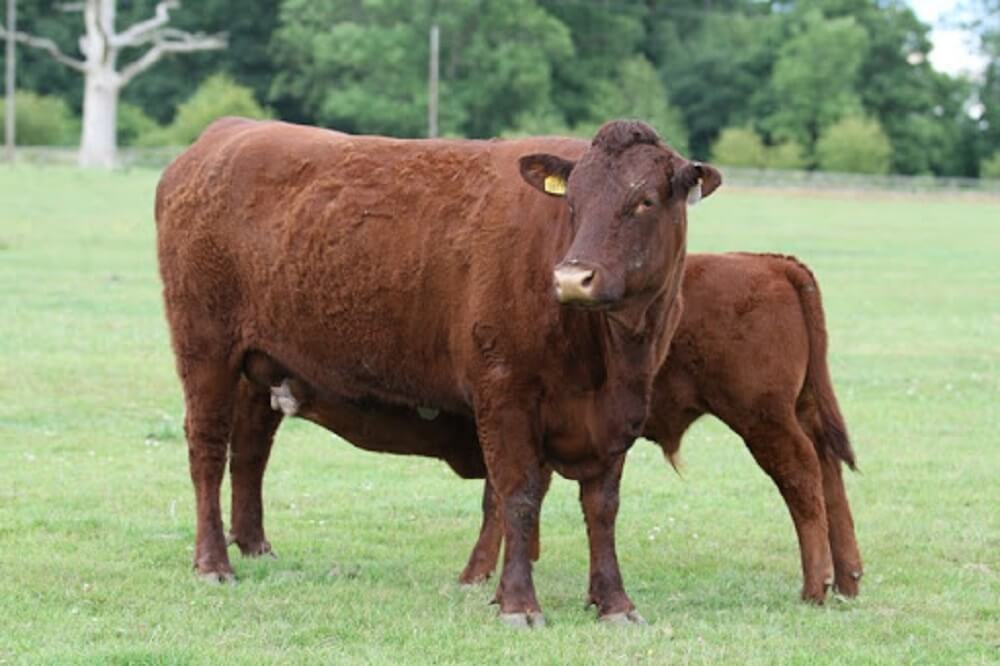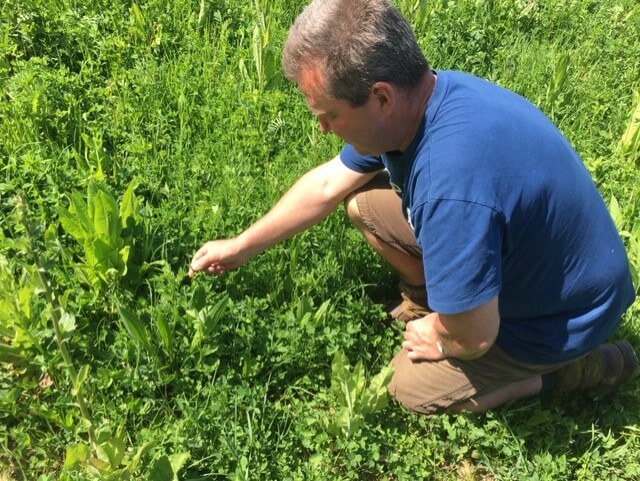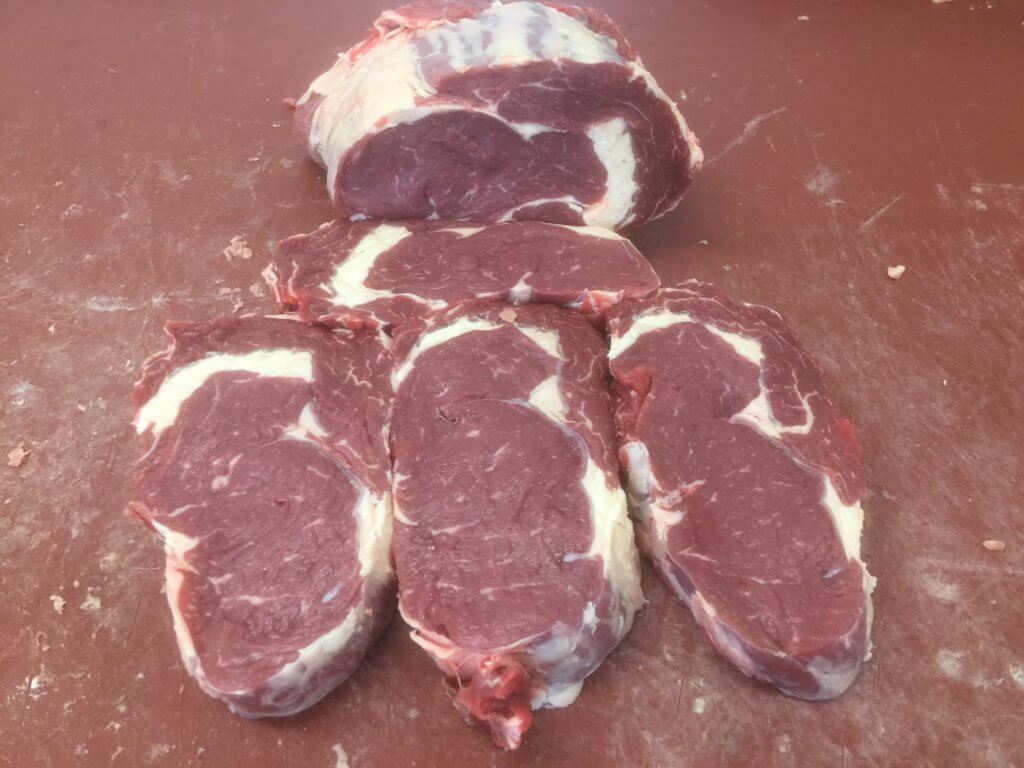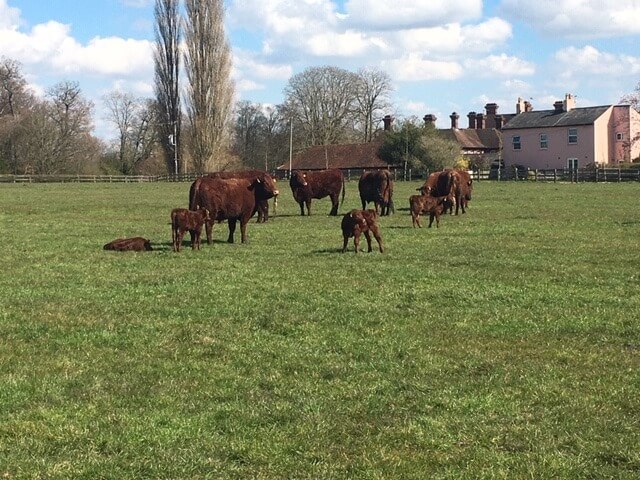Micklefield Hall cattle
Many visitors to Micklefield Hall are surprised to find out just how much is going on within the estate. In this blog we find out about regenerative farming and the cattle that can be seen grazing on the luscious land around Micklefield.
Johnathan and Laura Chapman were really excited when the opportunity arose for them to work in conjunction with Jamie and Anna Rankin, at Micklefield Hall. As big supporters of regenerative faming, conservation and native breeds, Jamie and Anna welcomed Native Breeds’, Red Ruby Devon Cattle with open arms.
So, Johnathan and Laura, why did you decided to graze your cattle at Micklefield Hall?
“A herbal ley is a complex seed mixture of grasses, legumes and herbs, which bring a range of benefits to forage, livestock health and soil fertility. Herbal leys can often include a mixture of up to 17 species. At Micklefield, we are seeing these herbal leys coming up, containing sainfoin, chicory, birdsfoot trefoil, yarrow, red and white clover, plantain, Lucerne, and various grasses. It provides protein, energy, and nutrients and the calves are looking amazingly well on it. The good thing about this species rich mix is that it has a range of rooting depths, making it resilient to different conditions, and it actively adds to the fertility of the soil.
What do you particularly like about the Red Ruby Devon Cattle breed?
“They produce superb beef, recognised in the Slow Food Movement’s Ark of Taste. They are calm, docile animals, which means they are easier on the fields and on their handlers than some other breeds. They are also known for ease of calving, which is hugely important from a welfare perspective.
Importantly, they make very good use of their food. They live very well on pasture and do not need to be fed grain, soya or other concentrate feeds. Our native cattle live very well off our native grasslands, and this is central to our ethos.
Red Ruby Devons are a beautiful native breed that we are proud to support. Both the cattle and the beef have exceeded our expectations.”
Do the cattle contribute to the health of the Micklefield estate?
“With the way we are managing the grazing, the cows eat the top of the plant and trample some vegetation into the soil. This contributes to the soil fertility. But they leave quite a lot of the growth standing when we move them on. This allows it to recover more quickly. Not only because of the photosynthesising leaf matter left, but because if plants are grazed down short they shed root matter as a survival technique. We want them to keep their deep roots so we move the cows before it gets to that position.
Well managed pasture is an environmental asset. Grass itself supports many insect, bird and animal species, providing food and habitats. But even more importantly the soil underneath a well-managed pasture should be well structured, high in humus, and teaming with insect and microbial life. This is a good thing in itself, and also means that the soil can play the part it should in a drainage system (holding water) and as a carbon sink.
Why do you choose to feed your cattle by allowing them to graze on pasture rather than the more often seen method of feeding cattle with grain or grass?
“We talk about pasture fed meat, rather than “grass fed meat”, because good pasture is full of herbs, clovers and other plants. This variety is good for the cattle and for the flavour of the beef. It is also good for the environment. Diversity in the pasture encourages diversity in the soil, insect, bird and animal life associated with it.
Pasture fed beef has been shown to be lower in saturated fat and higher in Omega 3 fatty acids, CLA and vitamins B and E than grain and soya fed beef. Red meat gets some bad press for being “unhealthy”. But increasingly we are seeing that this bad press relates to grain fed beef, which has a higher ratio of “bad” Omega 6 fatty acids. It also relates to the sheer volumes that some people eat! Like most good things, red meat consumption should be kept in balance. Pasture fed beef (eaten in sensible amounts) brings all the obvious benefits of beef such as protein and iron, with the further benefits of a good ratio of Omega 3 to 6, and a higher vitamin and mineral count. It really is good for you. To get these benefits the animal must have been fed off pasture for its whole life. Some producers will say their cattle are grass fed, because they spent some of their life in a field. But if they use grains and soya to fatten (“finish”) their animals then the composition of the meat changes and the health benefits described above are quickly reversed.
Where can we find out more about your work and more importantly, where can we buy your gorgeous meat from?
We dry age our beef here in our salt lined cold store at Bailey Hill Farm, and it is cut in our butchery. We do a carcass most weeks, with our butcher in on Tuesdays and Wednesdays. We sell mixed boxes or individual cuts. Most of our beef is pre ordered and collected from us on Thursday and Friday evenings each week. We use a mailing list to remind people to order, and to tell them what is left to buy from the chiller after orders are made up. Visit our website www.native-beef.co.uk to find contact details and how to order!






